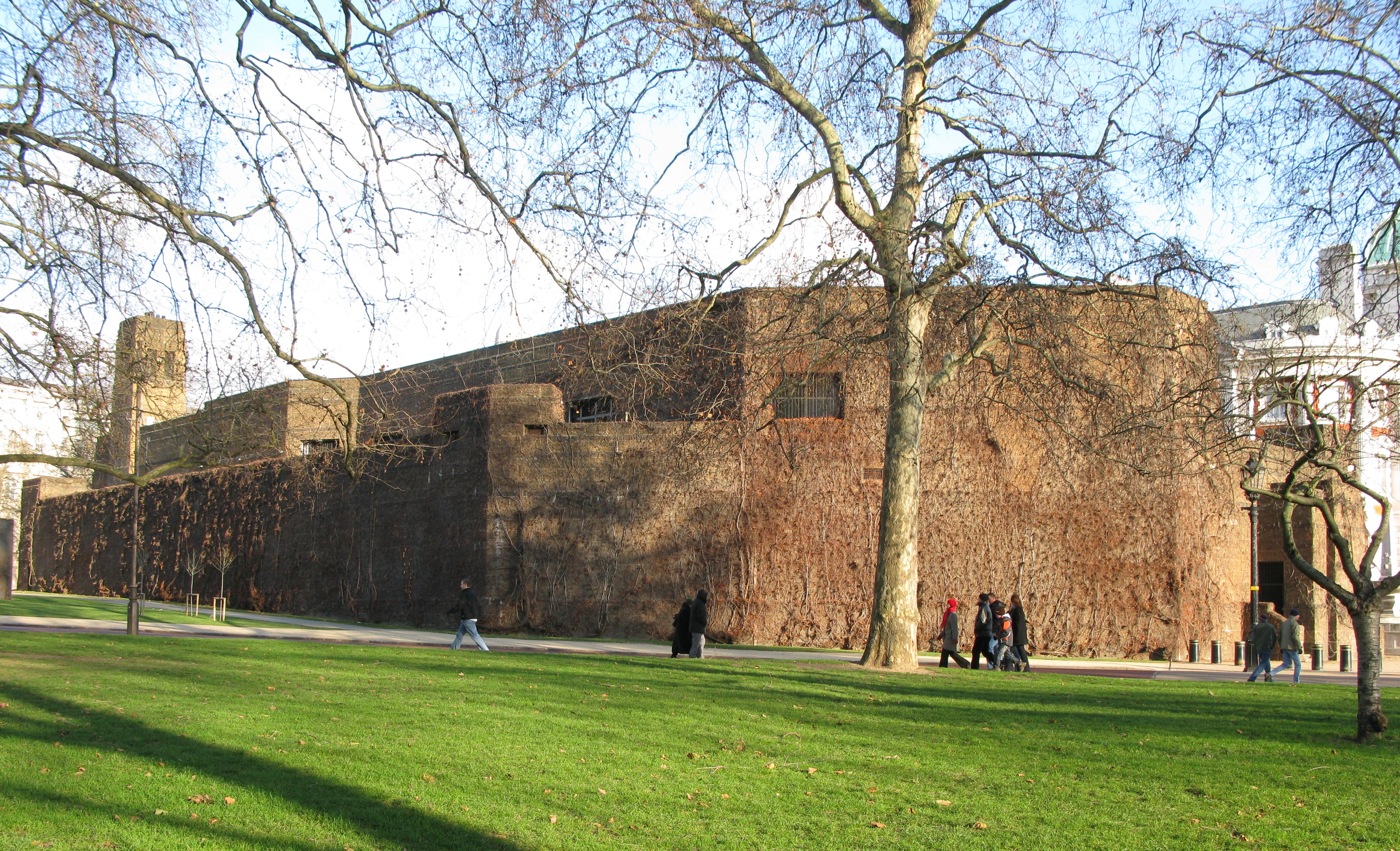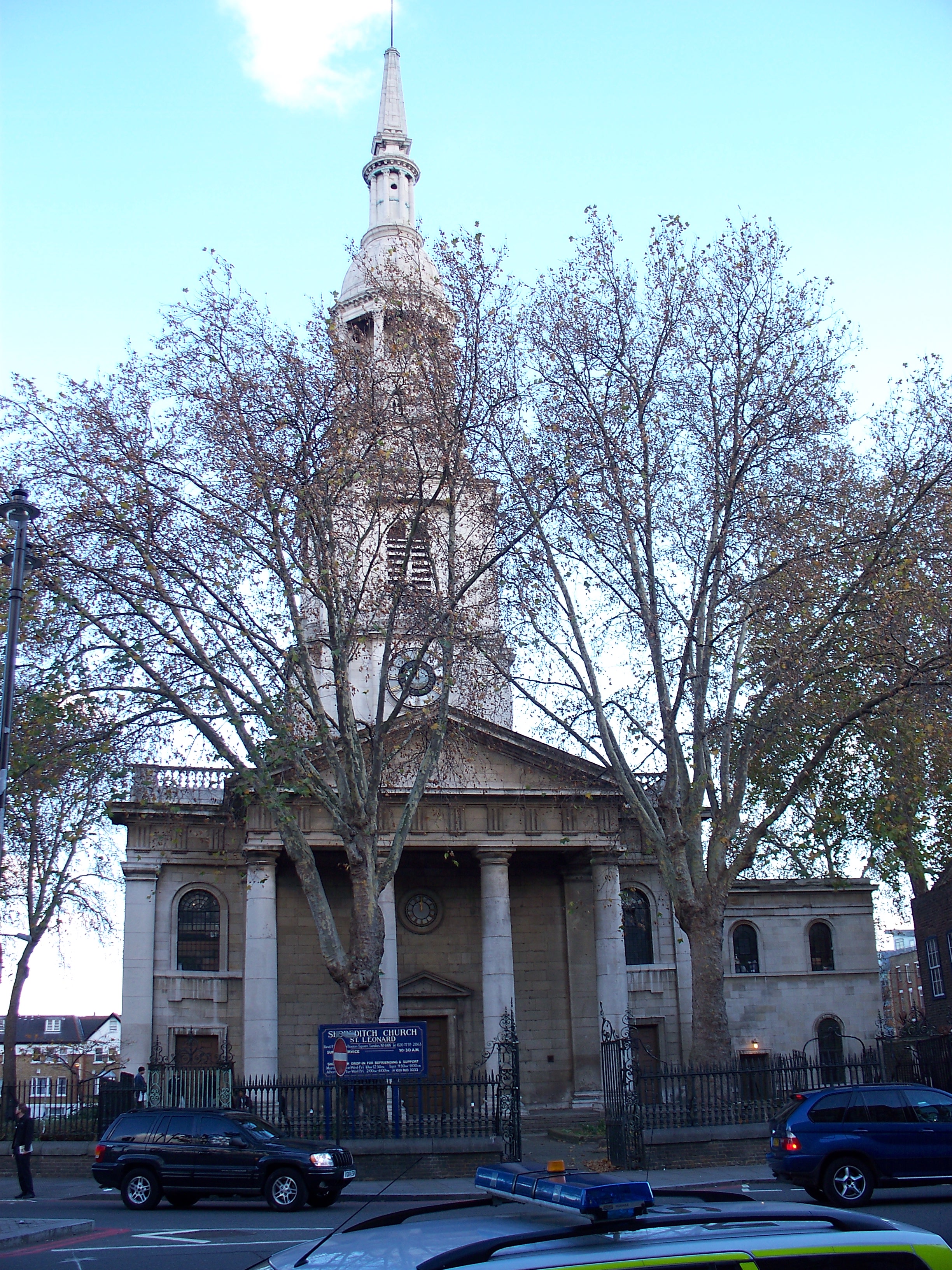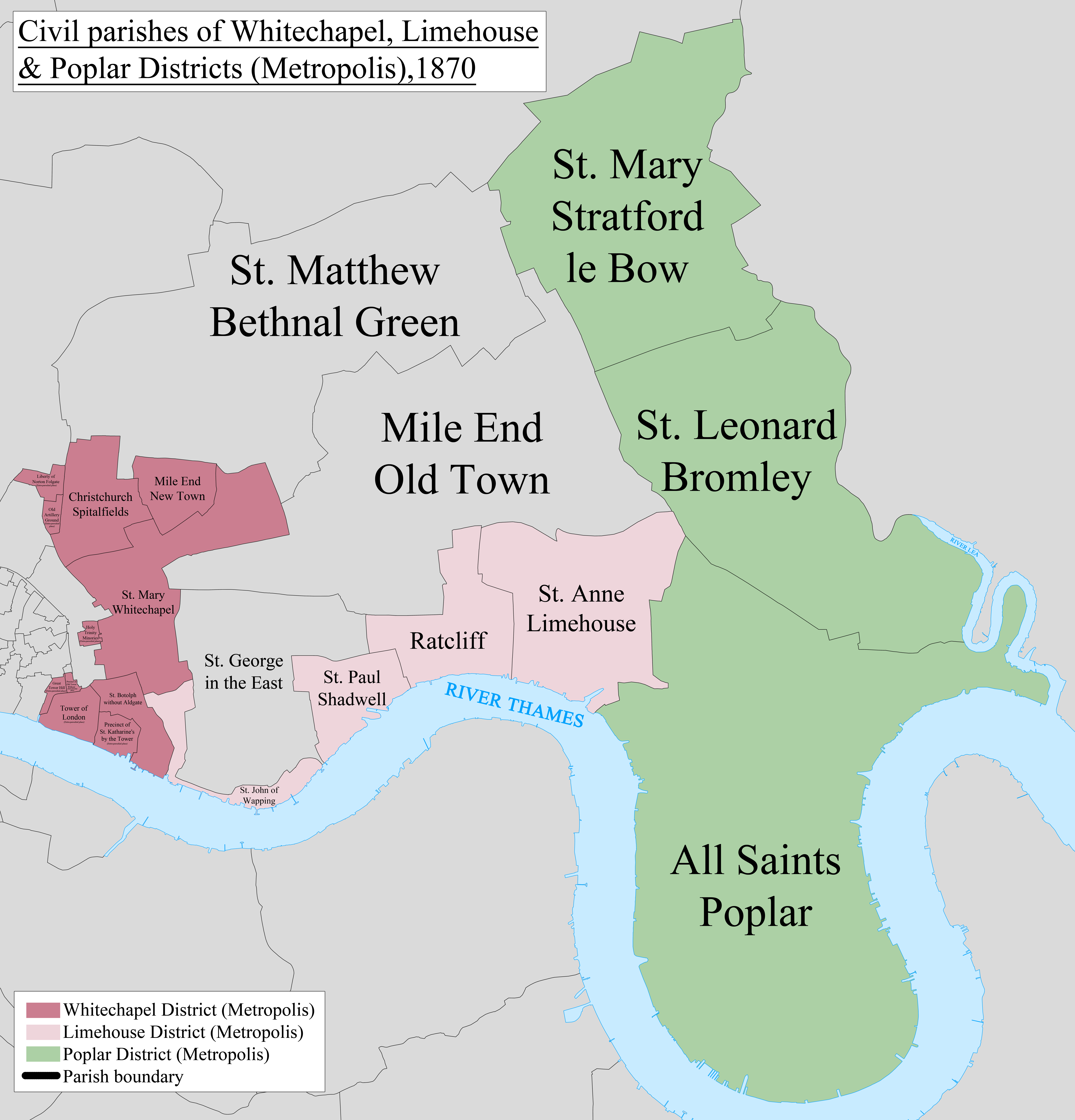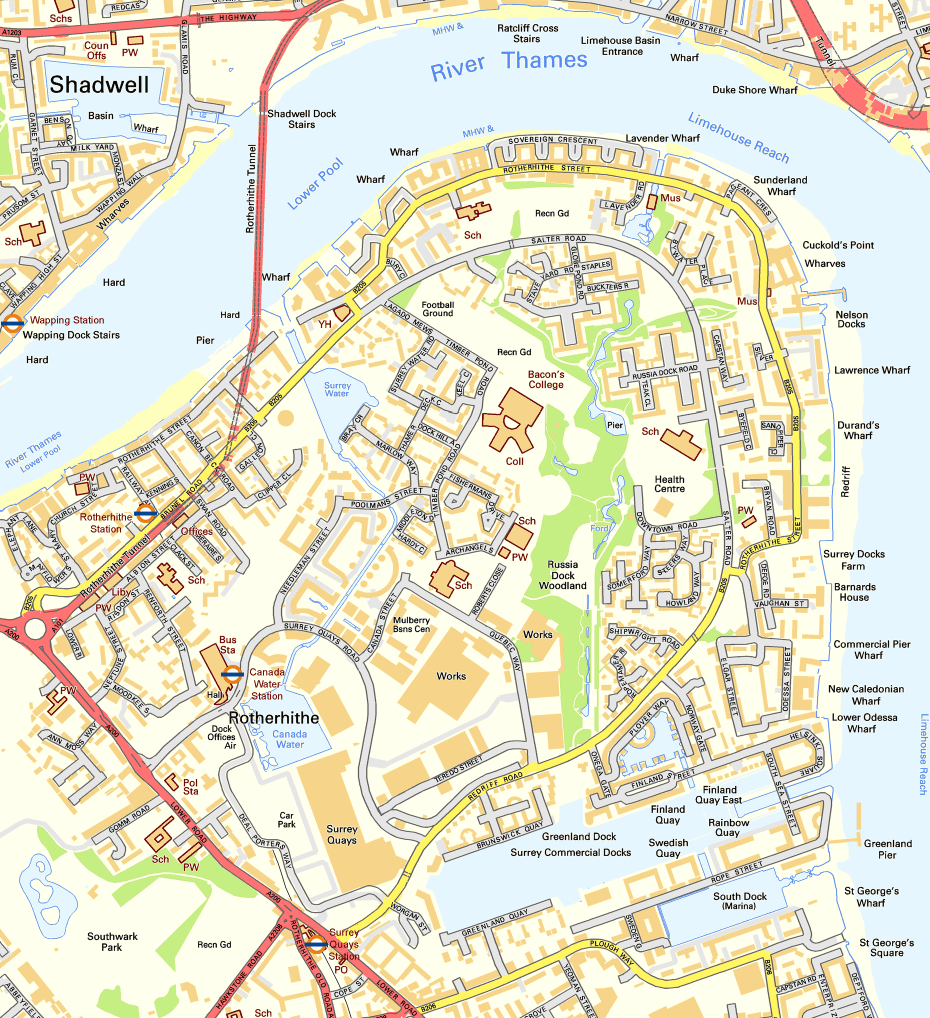|
Subterranean London
Subterranean London refers to a number of subterranea (geography), subterranean structures that lie beneath London. The city has been occupied by humans for two millennia. Over time, the capital has acquired a vast number of these structures and spaces, often as a result of war and conflict. Water and waste The River Thames runs west–east through the centre of London. Many tributaries flow into it. Over time these changed from water sources to untreated sewers and disease sources. As the city developed from a cluster of villages, many of the Thames tributaries were Subterranean rivers of London, buried or converted into canals. The rivers failed to carry all the sewage of the growing metropolis. The resulting health crisis led to the creation of the London sewerage system (designed by Joseph Bazalgette) in the late nineteenth century. It was one of the world's first modern sewer systems and is still in use today, having been designed to account for the city's continued growth. T ... [...More Info...] [...Related Items...] OR: [Wikipedia] [Google] [Baidu] |
Subterranea (geography)
Subterranea are ''underground structures'', both natural (such as caves) and human-made (such as Mining, mines). Some subterranea and related topics include: Natural * Caves ** Cenote ** Ice cave ** Sea cave ** Sinkhole * Karst * Lava tube ** Lunar lava tube, Lunar and Martian lava tubes * Subterranean river * Subterranean waterfall * Underground lake * Volcanic pipe Human-made or human-related by common function The following is a list of examples of structures which are or can be underground. * Civil defense ** Air raid shelter ** Blast shelter ** Fallout shelter ** Storm cellar * Cultural heritage ** Catacombs ** Dungeon ** Erdstall ** Fogou ** Hypogeum ** Passage grave ** Rock-cut architecture *** Rock-cut tomb * Disposal of human corpses, Disposal of corpses or religion: ** Burial vault (tomb), Burial vault ** Crypt * Underground living, Living ** Basement ** Cave dweller, Cave dwelling ** Dugout (shelter), Dugout ** Earth shelter ** Underground city * Maintenance ** ... [...More Info...] [...Related Items...] OR: [Wikipedia] [Google] [Baidu] |
Kingsway (London)
The A4200 is a major thoroughfare in central London. It runs between the A4 at Aldwych, to the A400 Hampstead Road/Camden High Street, at Mornington Crescent tube station, via Holborn, Bloomsbury, Euston and Somers Town. Kingsway Kingsway is a major road in central London, designated as part of the A4200. It runs from High Holborn, at its north end in the London Borough of Camden, and meets Aldwych in the south in the City of Westminster at Bush House. It was opened by King Edward VII in 1905. Together Kingsway and Aldwych form one of the major north–south routes through central London linking the ancient east–west routes of High Holborn and Strand. The name "King's Way" originally applied to what is now Theobalds Road, as it was the route that King James I took when travelling from London to his residence Theobalds Palace in Hertfordshire. History Building the road The road was purpose-built as part of a major redevelopment of the area in the 1900s. ... [...More Info...] [...Related Items...] OR: [Wikipedia] [Google] [Baidu] |
Military Citadels Under London
A number of military citadels are known to have been constructed underground in central London, dating mostly from the Second World War and the Cold War. Unlike traditional above-ground citadels, these sites are primarily secure centres for defence coordination. A large network of tunnels exists below London for a variety of communications, civil defence and military purposes; however, it is unclear how these tunnels, and the various facilities linked to them, fit together, if at all. Even the number and nature of these facilities is unclear; only a few have been officially admitted to. Ministry of Defence citadels The Ministry of Defence (MOD) Main Building in Whitehall was outfitted with two bunkers, known as the North and South Citadels, when first built. The site of the South Citadel was later used for an improved "Defence Crisis Management Centre" bunker. The bunker is named after the ancient Greek poet Pindar whose house was the only one left standing in Thebes following ... [...More Info...] [...Related Items...] OR: [Wikipedia] [Google] [Baidu] |
Shunt (theatre Company)
Shunt is a London-based performance collective founded in 1998. Most of the co-founders met as students at London's Central School of Speech and Drama while pursuing the Advanced Theatre Practice MA in 1997–1998, which specializes in collaborative practice. In the summer of 1998, Shunt's final term show 'Twist' was taken to Hill Street Theatre for the Edinburgh Festival under the company name Stephanie's Fridge. The members of the company at that time were David Rosenberg, Lizzie Clachan, Louise Mari, Mischa Twitchin, Gisele Edwards, Su Jin Lee, Laura Cockcroft, Catherine Bowman Shaw, Kirsty Yuill, Hannah Ringham, Serena Bobowski, Gemma Brockis, and Heather Uprichard. Shunt's work is centered on immersive site-specific performance, usually on a grand scale, and has been supported by Britain's Royal National Theatre NESTA (the National Endowment for Science, Technology and the Arts) and Arts Council England. Shows and projects ''The Ballad of Bobby Francois'' "On October 12th, ... [...More Info...] [...Related Items...] OR: [Wikipedia] [Google] [Baidu] |
London Bridge Station
London Bridge is a central London railway terminus and connected London Underground station in Southwark, south-east London. It occupies a large area on three levels immediately south-east of London Bridge, from which it takes its name. The main line station is the oldest railway station in London fare zone 1 and one of the oldest in the world having opened in 1836. It is one of two main line termini in London to the south of the River Thames (the other being Waterloo) and is the fourth-busiest station in London, handling over 50 million passengers a year. The station was originally opened by the London and Greenwich Railway as a local service. It subsequently served the London and Croydon Railway, the London and Brighton Railway and the South Eastern Railway, thus becoming an important London terminus. It was rebuilt in 1849 and again in 1864 to provide more services and increase capacity. Local services from London Bridge began to be electrified in the beginning of the ... [...More Info...] [...Related Items...] OR: [Wikipedia] [Google] [Baidu] |
London Waterloo Station
Waterloo station (), also known as London Waterloo, is a major central London railway terminus on the National Rail network in the United Kingdom, in the Waterloo area of the London Borough of Lambeth. It is connected to a London Underground station of the same name and is adjacent to Waterloo East station on the South Eastern Main Line. The station is the terminus of the South West Main Line to via Southampton, the West of England main line to Exeter via , the Portsmouth Direct line to which connects with ferry services to the Isle of Wight, and several commuter services around west and south-west London, Surrey, Hampshire and Berkshire. The station was opened in 1848 by the London and South Western Railway, and it replaced the earlier as it was closer to the West End. It was never designed to be a terminus, as the original intention was to continue the line towards the City of London, and consequently the station developed in a haphazard fashion, leading to di ... [...More Info...] [...Related Items...] OR: [Wikipedia] [Google] [Baidu] |
The Old Vic Tunnels
The Old Vic Tunnels was an underground arts venue and performance space beneath London Waterloo railway station. The space consisted of almost 30,000 square feet of unused railway tunnels. It officially opened its doors for the first time in 2009 and closed in March 2013. In 2010 The Old Vic acquired Tunnels 228–232 from BRB (Residuary) and transformed it into a performance venue. It hosted numerous events including Banksy's UK Premiere of his documentary ''Exit through the Gift Shop'' and U.S. President Bill Clinton's latest fundraiser with the Reuben Foundation in May 2012. In February 2013 it was announced that the Old Vic Tunnels would close its doors on 15 March 2013: "We have three great years to look back on, and are proud of the remarkable range of events and productions that we have presented in the space." In 2014, Vans won the bidding to operate the Old Vic Tunnels and transformed them into a skate park called the House of Vans. History In February 2010, The ... [...More Info...] [...Related Items...] OR: [Wikipedia] [Google] [Baidu] |
London Overground
London Overground (also known simply as the Overground) is a Urban rail in the United Kingdom, suburban rail network serving London and its environs. Established in 2007 to take over Silverlink Metro routes, it now serves a large part of Greater London as well as Hertfordshire, with 113 stations on the six lines that make up the network. The Overground forms part of the United Kingdom's National Rail network but it is under the Rail franchising in Great Britain#Concessions, concession control and branding of Transport for London (TfL). Operation has been contracted to Arriva Rail London since 2016. TfL previously assigned orange as a mode-specific colour for the Overground in branding and publicity including the Roundel (London Transport), roundel, on the Tube map, trains and stations. In 2024, each of the six Overground lines were given distinct colours and names – Lioness line, Lioness, Mildmay line, Mildmay, Windrush line, Windrush, Weaver line, Weaver, Suffragette line, ... [...More Info...] [...Related Items...] OR: [Wikipedia] [Google] [Baidu] |
Shoreditch
Shoreditch is an area in London, England and is located in the London Borough of Hackney alongside neighbouring parts of Tower Hamlets, which are also perceived as part of the area due to historic ecclesiastical links. Shoreditch lies just north-east of the border with the City of London and is considered to be a part of London's East End. In the 16th century, Shoreditch was an important centre of the Elizabethan theatre, and it has been an important entertainment centre since that time. Today, it hosts many pubs, bars and nightclubs. The most commercial areas lie closest to the City of London and along the A10 Road, with the rest mostly residential. Toponymy Early spellings of the name include ''Soredich'' (), ''Soresdic'' (1183–4), ''Sordig'' (1204), ''Schoresdich'' (1220–21), and other variants. Toponymists are generally agreed that the name derives from Old English "''scoradīc''", i.e. "shore-ditch", the shore being a riverbank or prominent slope; but there is disagree ... [...More Info...] [...Related Items...] OR: [Wikipedia] [Google] [Baidu] |
Wapping
Wapping () is an area in the borough of Tower Hamlets in London, England. It is in East London and part of the East End. Wapping is on the north bank of the River Thames between Tower Bridge to the west, and Shadwell to the east. This position gives the district a strong maritime character. The area was historically composed of two parishes, St George in the East, and the much smaller St John's. Urbanisation of the shoreline began in earnest after the draining of Wapping marsh, and the consolidation of the river wall in the late 16th century. Many of the original buildings were demolished during the construction of the London Docks and Wapping was further seriously damaged during the Blitz. As the Port of London declined after the Second World War, the area became run down, with the great warehouses left empty. Some were demolished, but others such as Tobacco Dock survive. The area underwent further change during the 1980s when warehouses started to be converted into lux ... [...More Info...] [...Related Items...] OR: [Wikipedia] [Google] [Baidu] |
Rotherhithe
Rotherhithe ( ) is a district of South London, England, and part of the London Borough of Southwark. It is on a peninsula on the south bank of the Thames, facing Wapping, Shadwell and Limehouse on the north bank, with the Isle of Dogs to the east. It borders Bermondsey to the west and Deptford to the south-east. The district is a part of the London Docklands, Docklands area. Rotherhithe has a long history as a port, with Elizabethan era, Elizabethan shipyards and working docks until the 1970s. In the 1980s, the area along the river was redeveloped as housing through a mix of warehouse conversions and new-build developments. The Jubilee line was extended to the area in 1999, giving fast connections to the West End of London, West End and to Canary Wharf; the East London Line, East London London Underground, underground line was converted to part of the London Overground network in 2010, which provides easy access to the City of London. As a result, Rotherhithe is now a gentrifica ... [...More Info...] [...Related Items...] OR: [Wikipedia] [Google] [Baidu] |
Marc Brunel
Sir Marc Isambard Brunel (, ; 25 April 1769 – 12 December 1849) was a French-American engineer active in the United States and Britain, most famous for the civil engineering work he did in the latter. He is known for having overseen the process for and construction of the Thames Tunnel, for his work for the Royal Navy, and as father of the British civil and mechanical engineer, Isambard Kingdom Brunel. Born in France, Brunel preferred his given name Isambard (but is generally known to history as Marc, to avoid confusion with his famous son). Brunel fled to the United States during the French Revolution, and involved himself in engineering and architectural pursuits, including offering an impressive design for the new United States Capitol Building in Washington, D.C. After being naturalized in 1796, he was appointed Chief Engineer of New York City, and went on to design military, commercial, and other buildings. He moved to London in 1799, where he married Sophia Kin ... [...More Info...] [...Related Items...] OR: [Wikipedia] [Google] [Baidu] |










